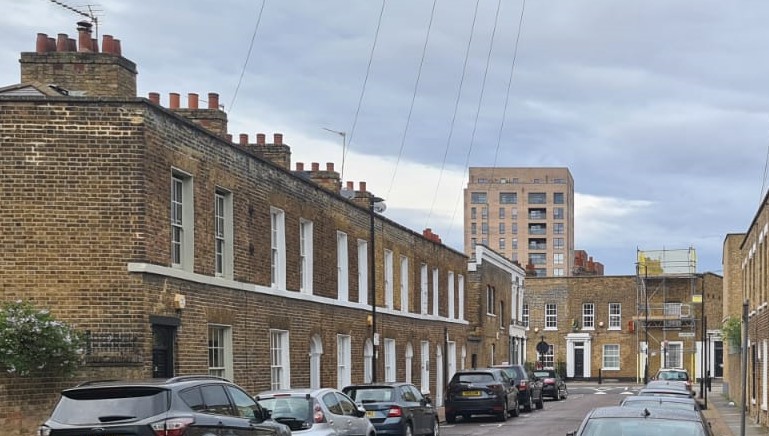Similar analysis different outcomes
During the latter stages of the previous government a Planning White Paper was expected almost on a daily basis. Like many other policy initiatives it fell foul of the Brexit stranglehold on parliament. It was partly to ensure that Labour had a response to the long expected White Paper that it launched a Planning Commission in September 2018 to develop a new suite of planning policies in advance of a General Election then expected to be in 2022.
Labour’s planning proposals made it into the 2019 manifesto but as we know Labour did not make it to government. Nevertheless, the Planning Commission’s suggested reforms sit as a powerful antidote to the view of planning and what it can achieve set out in the Government’s White Paper. Having said that the similarity in some of the analysis of what needs to change is striking.
Labour’s recommendations for greater use of digitisation in the planning system to improve accessibility and engagement with planning and the need for more investment in skills and training for planners are mentioned in the White Paper proposals.
Likewise, the need for reform of the Community Infrastructure Levy and putting in place a nationally agreed method of assessing housing need also are also reflected in both documents. Similarly, there is cross-party agreement that the design and quality of what is built need to be improved. There is also widespread agreement that local plan making needs to be simplified, speeded up and subject to statutory time limits.
However, what is massively different is the policy agenda that is envisioned by Labour and the Conservatives to achieve long lasting change to our neighbourhoods, regions and nation, and the values that need to underpin our planning system to achieve development fit for the 21st century and beyond.
Since 2010 the blame for the government’s inability to deliver on housing targets including those for affordable housing was laid at the door of planning even though the numbers of new houses approved through the planning system but not actually built rose year on year.
Alongside this, constant deregulation of planning, greater use of permitted development, sanctions against planning authorities for having too many appeals, contracted out planning services and too many local authorities without local plans in place led to an increasingly undemocratised, technically focused planning system that was increasingly at the mercy of speculators and where plan making and the visionary underpinnings of planning took a back seat.
Communities for the most part felt that planning was done to them and their views on planning were increasingly ignored or bypassed. Place making if it happened at all was the result of developers, planners and residents working together, despite the constraints of the system, to build or rebuild better communities.
And it was the need to build and rebuild strong and sustainable communities that was the starting point for Labour’s Planning Commission. We wanted place making to be at the heart of a planning system that would be value based to tackle inequality and address climate change.
The Labour Commission included representatives from key planning agencies and stakeholder groups and meetings of the Commission were supplemented by regional events with residents, developers and local authorities. The strong evidence base the Commission established documented the democratic deficit and technocratic complexity at the heart England’s planning system and led to proposals for radical change most notably in the need to build good quality homes with supporting infrastructure in genuinely sustainable neighbourhoods.
Thus, Labour’s proposals include recommendations for a new system of building standards to address quality, climate change and safety issues, and suggest putting in place new principles and guidance as well as national standards to achieve high quality design. It argues for a review of permitted development with planning permission being reinstated in most cases.
Labour wanted to see the relationship between what happens in local communities, their wider regions and the country as a whole reflected in a connected planning system with community, local, regional and national planning tiers so that infrastructure, jobs, local services and leisure and cultural facilities could be planned at the right spatial level. This would not only enable people to be properly housed it would facilitate people travelling safely to work with a transformation in greater use of cycles and public transport.
All neighbourhoods would be planned to have a high quality of life with the services they need to promote well-being on their doorstep and with the heritage of the built environment and natural environment protected and where possible enhanced. We wanted to achieve this by giving residents the ability to plan their communities alongside planning professionals who would give advice and would liaise between levels of the planning system.
That the Government’s White Paper says nothing about how to achieve well-being or equity through the planning system is perhaps not a surprise. What is a surprise is how little is said about land availability except for arguing that greater certainty needs to be given by the planning system to enable developers to come forward.
In contrast Labour suggested a radical approach to bringing more land forward by proposing setting up Public Development Corporations with the power to purchase, sell, and develop land to assist with the making and remaking of communities, alongside greater use of a simplified CPO system if necessary.
Labour also proposed introducing a land value capture system that would capture uplift for current and future communities. And Labour sees the greenbelt not as a land set in aspic but land to be used as part of climate change mitigation and that can help reduce health inequalities.
The Government has argued for change too but their proposals for a new zonal system do little to match the rhetoric expressed in much of the White Paper and will depend on the type of zonal system adopted as well as the details of the plan that goes alongside it. It could result in a development straight jacket without measures to support delivery and the high quality development the Government says it wants to see. Likewise the proposal to support permitted development that is replicable could reduce quality rather than improving it.
Both of these proposals also run the risk of further denuding democratic oversight of, and involvement in, planning. There is no acknowledgement in the White Paper apart from keeping some sort of neighbourhood planning of the need to have citizens actively engaged in planning rather that simply being consulted (and then often ignored) about it.
Labour sought to address the need for active participation by involving residents in the first tier of planning – producing their community plan and making it the building block of the whole planning system.
The conclusion of TCPA is that the White Paper does not provide a single new right for community participation or a single new opportunity for democratic involvement in planning. For that reason alone the government should be asked to think again or come back with much more detail on how they will actually achieve the good quality place-making they say they want but cannot deliver through the proposals outlined so far.

